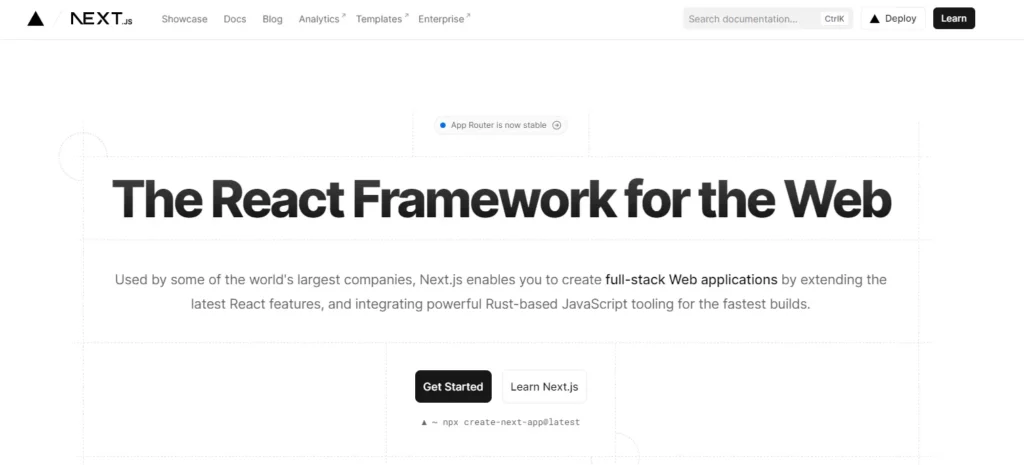Two development platforms are becoming very fashionable as they allow companies to quickly adapt to change and create applications that respond to the business in an agile way, with an attractive look & feel, and whose development time meets expectations. of internal customers.
We are talking about the Low-Code and No-Code platforms, which are leading in accelerating the digital transformation in companies. The objective of this article is to analyze the strengths, weaknesses, and use cases of these platforms as well as to make a comparison of them from an independent point of view.
Related: 6 Best Low-Code Programming Tools for Your Business
What are they?
They are platforms that provide us with an environment to quickly create simple applications.
No-Code platforms offer a visual, step-by-step process that allows business users to quickly create generic applications without requiring a developer profile.
Low-code platforms use visual modeling tools to decrease the coding required to build architecturally complex, enterprise-grade applications.
The main and common characteristics of these platforms are:
- They have a very intuitive drag-and-drop-driven visual development environment.
- They allow the management of user access permissions.
- They allow you to create applications with designs adaptable to mobile devices.
- Support updates and evolution in real time
The main differences between these platforms are:
- While No-Code platforms can be managed by any technical or non-technical profile, low-code platforms require basic programming knowledge.
- Low-code platforms can be integrated with third-party systems.
- Low-code platforms, by allowing a higher degree of programming, allow for generating more complex solutions.
- Low-code platforms allow you to generate applications with a longer life cycle.
- Some low-code platforms allow you to build mobile apps natively.
In summary, Low-Code platforms allow a greater degree of customization. Therefore, they allow more complex operations to be carried out or implement more use cases.
Use Cases
Typical use cases for No-Code platforms are as follows:
- Simple business cases follow the CRUD model (Create, Read, Update, and Delete).
- Replace the Excel sheets that users create in a company to complement the information systems they have.
- Applications with a short lifetime
- Manual processes that do not require connections to third-party systems.
The Low-Code case complements the No-Code with more features by allowing greater control of the application:
- Applications with a longer life cycle.
- Applications that need to be integrated with more complex corporate systems.
- Applications that require more complex and customized functionalities.
- Applications that cover critical business processes.
- Development of MVP (Minimum Viable Products) allows you to see the result with less investment.
- Development of application prototypes for business processes.
Advantages and Disadvantages of using these Platforms
No-code applications allow creativity by making development accessible to people with a low technical profile.
They maximize agility to respond to business processes quickly (months or weeks), removing the developer from worrying about issues such as coding rules for screen resolutions, scalability, traffic routing, and others that normally consume a lot. Time spent on traditional application development.
Despite the advantages offered by both technologies, expectations must be tempered, especially once you get to the differentiated aspects of each business. The speed is great, but it is recommended to take into account some disadvantages to avoid accumulating unmanageable technical debts:
- Limited integration options: With so many different tools and products combined to define a digital transformation strategy, applications are tightly coupled to the selected Low-Code tool with limitations. Not being clear about the expectations of these applications versus agility can mean a risk if you think of these tools for the core of the business.
- Lack of customization: In the medium/long term, the need to customize a specific component to meet specific business needs may arise. Adapting the business to these tools can limit the business process.
- Security and Reliability: When you build a custom platform, you know you can trust it because you know it inside out. With low code, you take some risks because you need full control. The lack of control could also cause security and traceability problems.
- Technical debt is a key challenge with Low/No-Code platforms that will improve over time.
Conclusions
Despite these challenges, low code development can be important in digital transformation. They excel in proof-of-concept scenarios because an idea can be executed quickly before diving into more costly and lengthy development. Or, if you need a short-term response to a business problem, low-code can provide a solution as long as it’s clear that you need to tailor a custom application to business needs in the future.
When you need a differentiating system, business core, custom/traditional development may be the best path, but that doesn’t mean it has to be slow.
There is a common misconception that custom development is automatically slow. You can use agile processes to get an MVP in just a few months. Like the waterfall vs. agile, the decision should not be based on speed. It should be based on the needs of the business.
Every digital transformation strategy has a time and place for custom and low-code platforms. The key is to analyze the unique needs of each business and have your criteria to decide when to use them.





